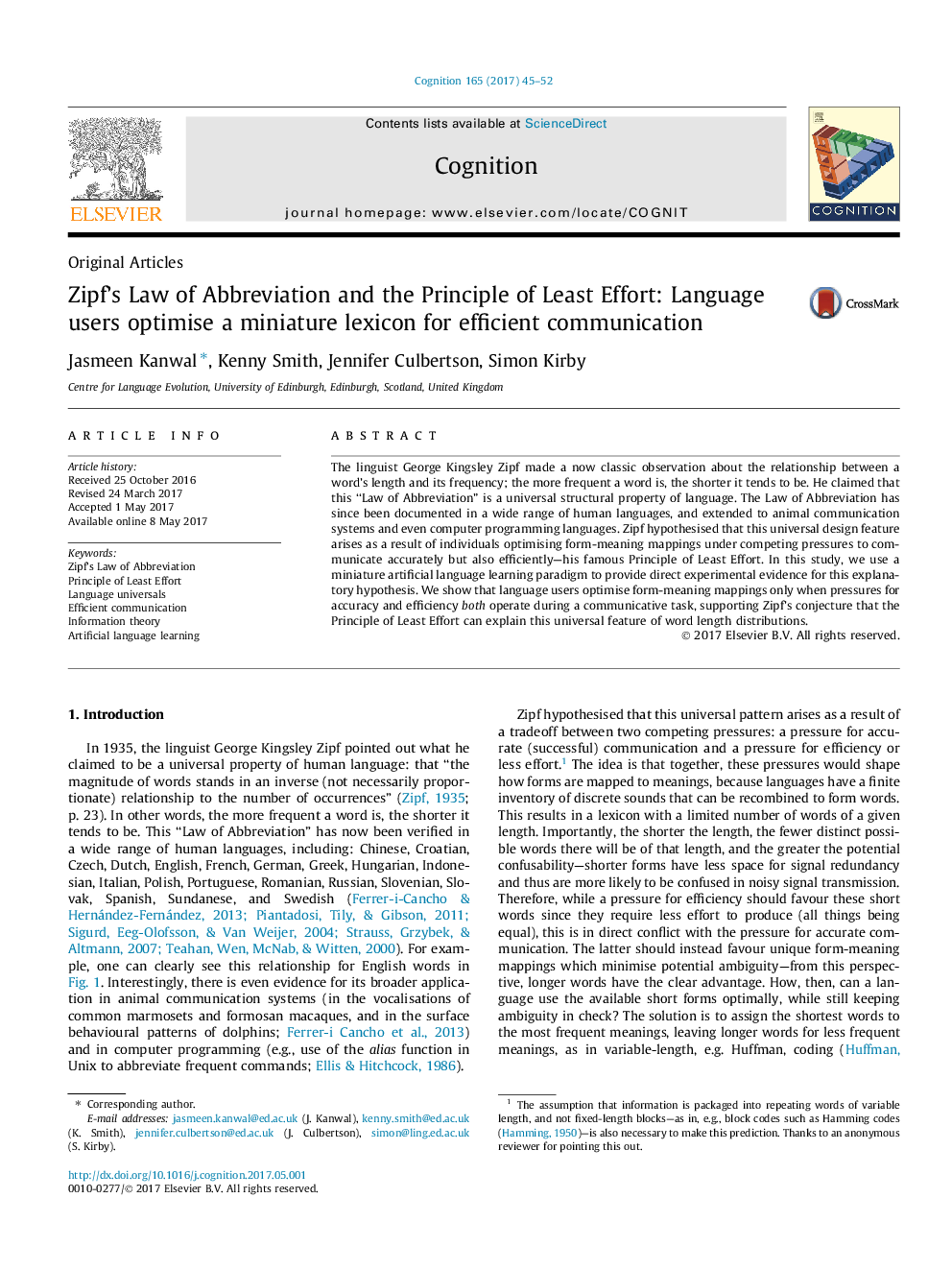| Article ID | Journal | Published Year | Pages | File Type |
|---|---|---|---|---|
| 5041502 | Cognition | 2017 | 8 Pages |
â¢Zipf's Law of Abbreviation (ZLA): more frequent words tend to be shorter.â¢His hypothesis: ZLA due to speakers maximising accuracy while minimising effort.â¢We tested this hypothesis using an artificial language learning task.â¢We manipulated pressures for communicative accuracy and efficiency.â¢ZLA-like lexicons only arose when both pressures were at play.
The linguist George Kingsley Zipf made a now classic observation about the relationship between a word's length and its frequency; the more frequent a word is, the shorter it tends to be. He claimed that this “Law of Abbreviation” is a universal structural property of language. The Law of Abbreviation has since been documented in a wide range of human languages, and extended to animal communication systems and even computer programming languages. Zipf hypothesised that this universal design feature arises as a result of individuals optimising form-meaning mappings under competing pressures to communicate accurately but also efficiently-his famous Principle of Least Effort. In this study, we use a miniature artificial language learning paradigm to provide direct experimental evidence for this explanatory hypothesis. We show that language users optimise form-meaning mappings only when pressures for accuracy and efficiency both operate during a communicative task, supporting Zipf's conjecture that the Principle of Least Effort can explain this universal feature of word length distributions.
